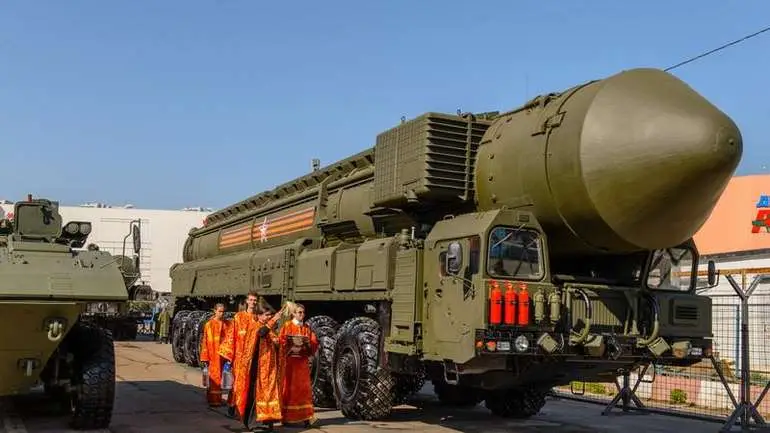Oreshnik: Russian ballistic missile
The Oreshnik missile is a new experimental medium-range ballistic missile. It is likely a modification of the existing RS-26 Rubezh missile.
Main characteristics of the Oreshnik missile
Range: The missile is expected to have a range of about 4,500 km, which will allow it to reach targets at considerable distances, including in NATO countries.
Flight time: The exact flight time has not been disclosed, but for medium-range missiles it is usually between 10 and 30 minutes, depending on the distance to the target.
Warhead weight: Information on the weight of the warhead has not been officially published, but for missiles of this class it can range from 500 to 1,200 kg.
Missile weight: The total weight of the missile is also not specified, but for medium-range ballistic missiles it can reach several tons.
Launch: The missile is launched from a mobile launcher, which makes it mobile and difficult to detect. One installation can carry only one missile.
New technologies of the Oreshnik missile
Hypersonic speed: The missile can attack targets at speeds of 2 to 3 kilometers per second, which corresponds to approximately Mach 10. This makes it extremely difficult for modern air defense systems to intercept, especially in the final phase of their trajectory.
Mobile launchers: Oreshnik is launched from mobile launchers, which guarantees its stealth and the ability to quickly change position after launch. This also complicates the task of detecting and destroying a missile system before launch.
Nuclear warhead: The missile is designed to drop nuclear warheads, which indicates the missile’s potential for use in strategic nuclear operations.
See also: Deposit or earnest money: booking a room in the EU
The difference between Oreshnik and RS-26 Rubezh
The Oreshnik missile and the RS-26 Rubezh may be related, but they represent different aspects of the Russian missile program. Below are the main differences and characteristics of each.
Name: RS-26 Rubezh is the Western intelligence documented name for an experimental medium-range ballistic missile developed in the Russian Federation in the early 2000s.
Range: up to 6,000 km.
Take-off weight: within 40-50 tons.
Warheads: can be equipped with several separate warheads (up to 4) with nuclear or non-nuclear charges.
Development: Development began no later than 2006, and the first launch took place in 2011.
Purpose: Designed to deliver nuclear warheads and can be used as a strategic weapon.
On November 21, 2024, Russia used the new missile for the first time to attack Ukraine, marking a significant escalation of the conflict. The launch was carried out from the Astrakhan region and was aimed at the city of Dnieper. According to analysts, this event demonstrated Russia’s ability to carry out nuclear attacks.
Russia also notified the US-NATO Joint Headquarters in Brussels of the launch of the ballistic missile 30 minutes in advance, through nuclear risk reduction channels. This action raised concerns among the international community and became the subject of high-level discussions.






